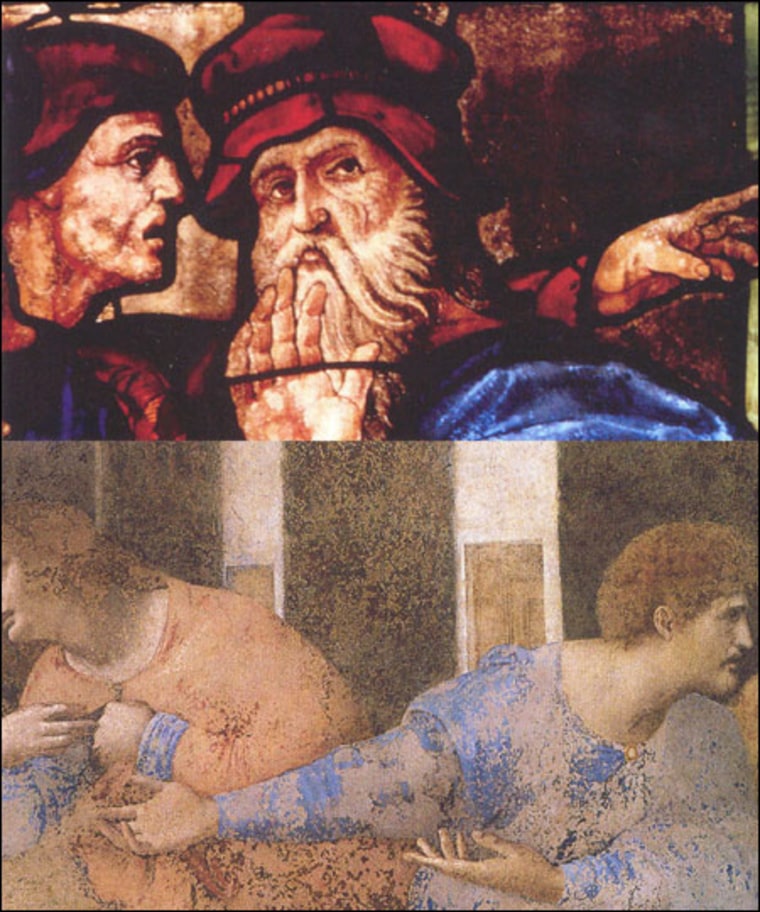A new, vividly colored portrait of Leonardo da Vinci has emerged from the windows of Arezzo's Cathedral in Tuscany, Italy, claims an Italian scholar who has published the finding in a new book, "The Portraits of Leonardo."
Depicting an amiable, bearded old man wearing a red hat, the portrait is one of many figures appearing in the stained glass on the cathedral's right wall.
The scene, which shows the biblical story known as the Raising of Lazarus, is part of a renowned portfolio of stained-glass work by the undisputed master of the time, the French artist Guillaume de Pierre di Marcillat (1475-1529).
"The image distinguishes itself by its dazzling intensity," said Alezzandro Vezzosi, director of the Museo Ideale in the Tuscan town of Vinci, where da Vinci was born in 1452.
According to Vezzosi, the stained-glass portrait dates to around 1520, one year after Leonardo's death in Amboise, France.
"The hypothesis is strengthened by the fact that a detail from 'The Last Supper' is evoked in the scene," Vezzosi said. "The figure next to the old bearded man strongly recalls the profile of the apostle Matthew in Leonardo's masterpiece."
After becoming a Dominican friar, probably to avoid murder charges, di Marcillat left France and worked in Italy with the architect Donato Bramante and fellow artist Raphael Sanzio. His most famous pupil was the painter, architect and art historian Giorgio Vasari.
"I believe he also met Leonardo, while traveling between Arezzo and Rome," Vezzosi said.
No one can say for certain what exactly da Vinci looked like: There isn't a single portrait known for certain to bear his likeness. According to Vezzosi, there are five types of da Vinci portraits. They share some common features (the beard, for example) but have enough variation to keep experts guessing.
"When studying Leonardo, everything should be considered an hypothesis," Carlo Pedretti, director of the Armand Hammer Center for Leonardo Studies at the University of California at Los Angeles, wrote in the foreword to the book.
The only drawing widely accepted as a self-portrait is a sketch in "Manuscript A," which is kept at the Institute de France in Paris. Created by da Vinci when he was 40, the portrait shows only the enigmatic silhouette of a man with a hat.
Historic sources, including Vasari in his "The Lives of the Artists," describe Leonardo as "an artist of outstanding physical beauty."
As he aged, portraits and reports suggest that the once-handsome Florentine genius wore the years on his face. Various sources report that at 60, da Vinci appeared much older.
Moreover, several portraits depict the left-handed artist with his right hand hanging stiffly at his side, hinting at the paralysis that afflicted da Vinci during the last years of his life.
"Di Marcillat's stained-glass portrait belongs to the typology of the old bearded man with a hat," said Vezzosi, referring to one of the five portrait types. "It certainly adds a new element to Leonardo's never-ending puzzle."
